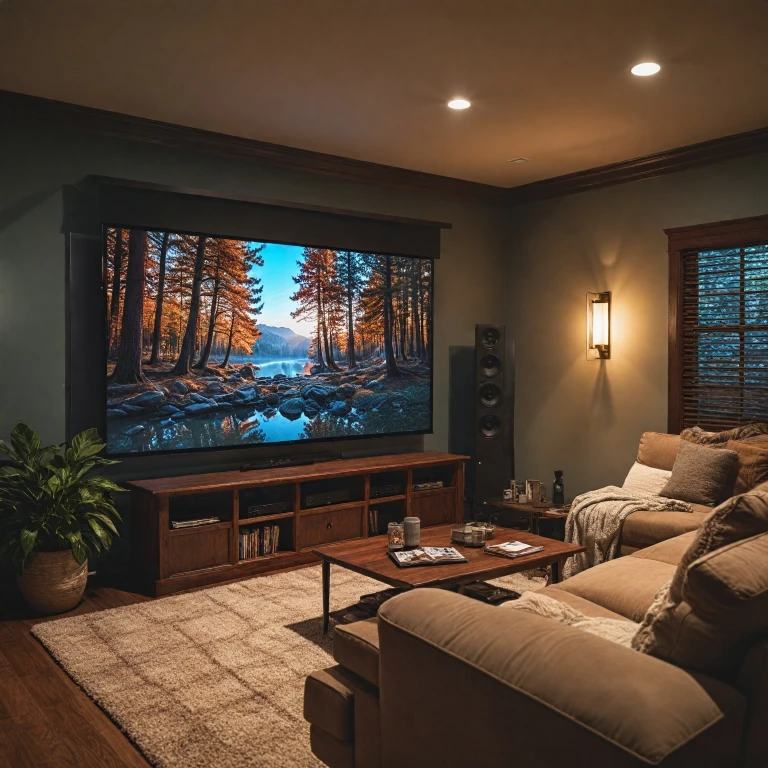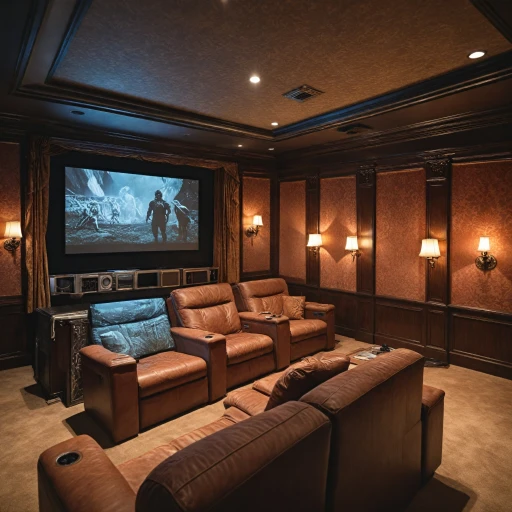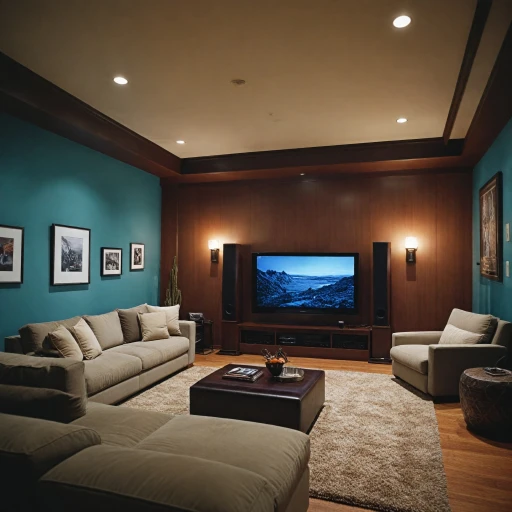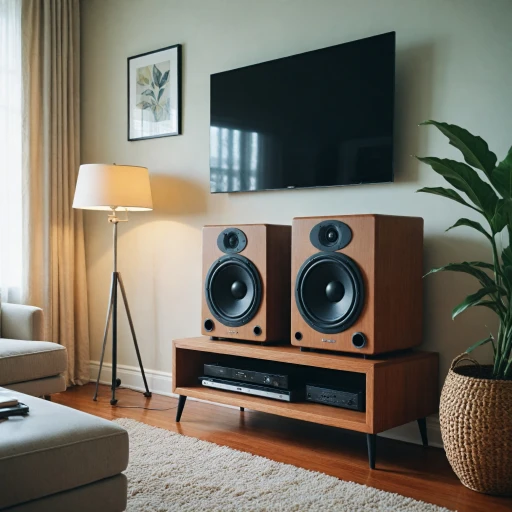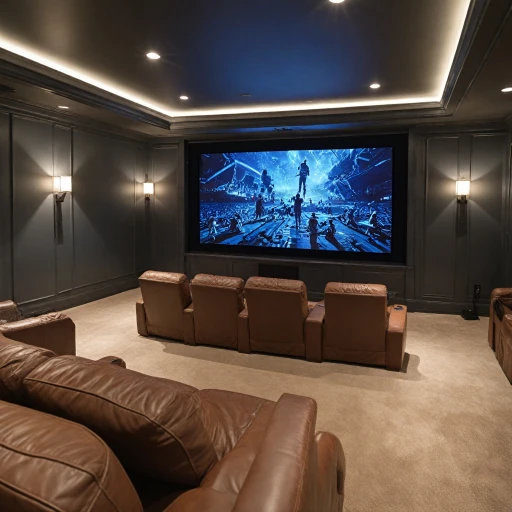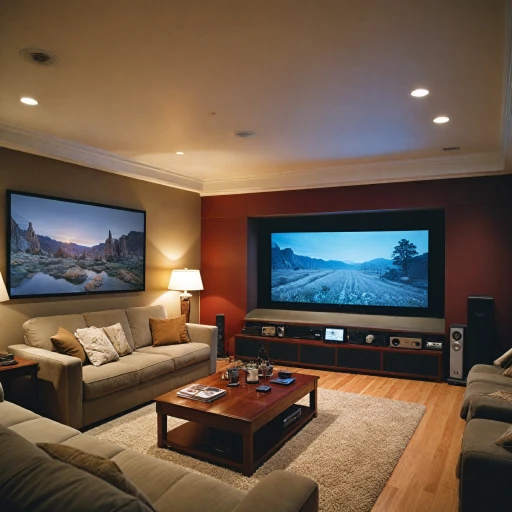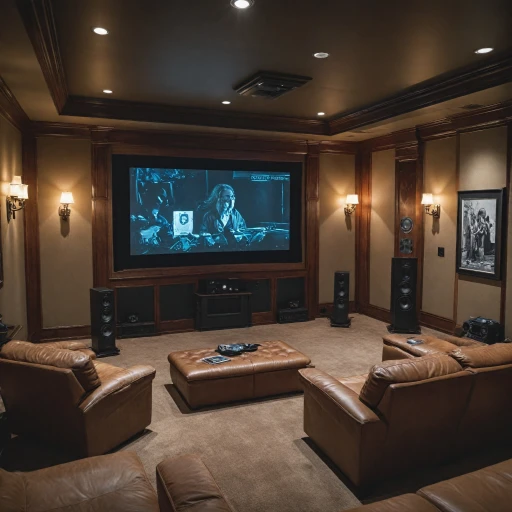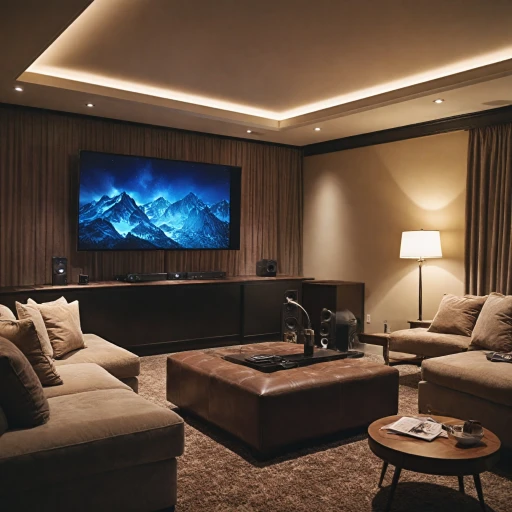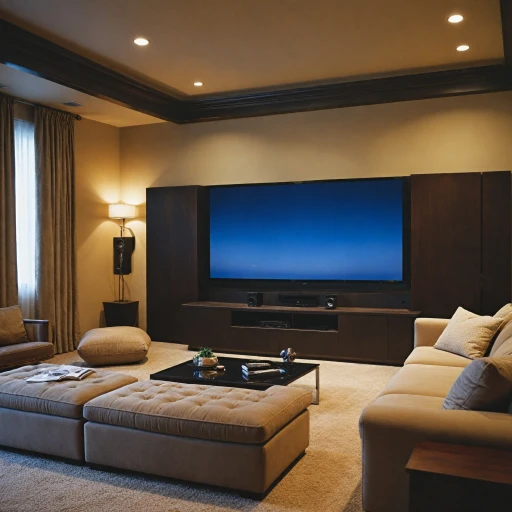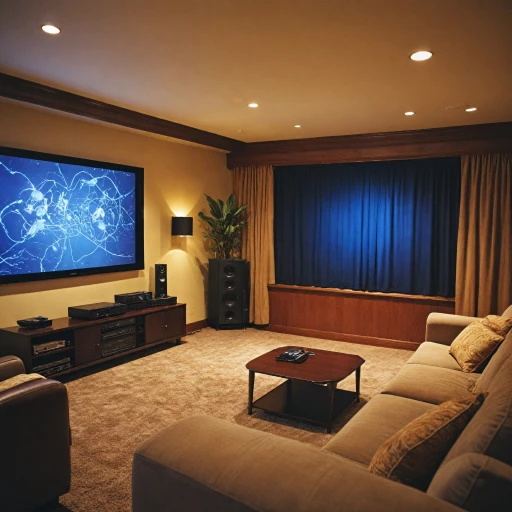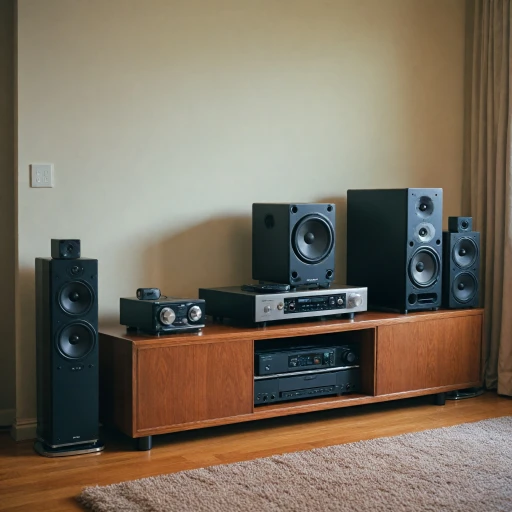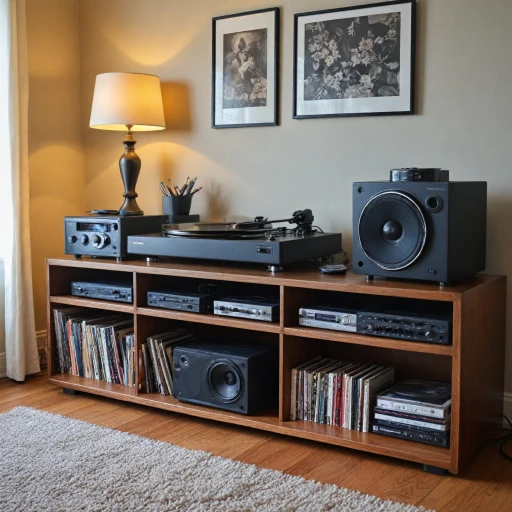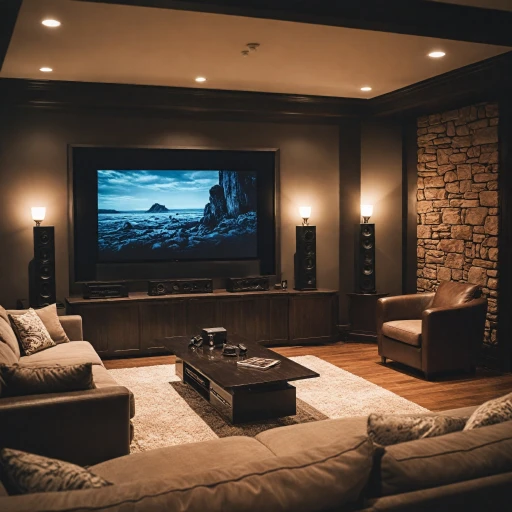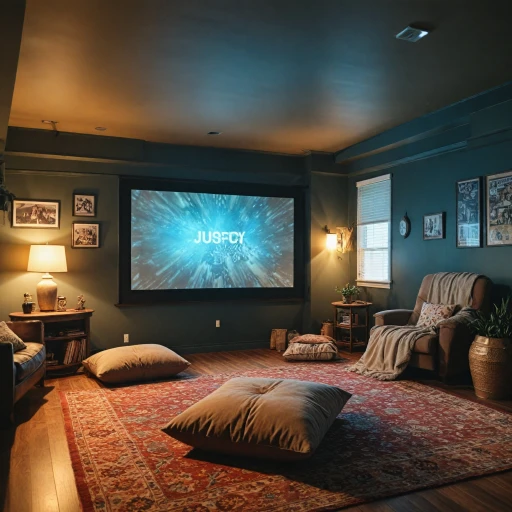
Understanding ALR Technology
Exploring the Edge of Ambient Light Rejecting Technology
At the forefront of home theater innovation, Ambient Light Rejecting (ALR) technology introduces a game-changing approach to enhance your viewing pleasure. The brilliance of ALR projector screens lies in their ability to combat ambient light conditions, preserving the sharpness and brightness of the projected image. For those new to this concept, ALR screens utilize a special surface designed to reject ambient light from the surroundings, focusing its reflective prowess solely on light from the projector.
The evolution of ALR screens has been instrumental for both short throw and ultra short throw projectors. These projectors often struggle with image clarity in well-lit rooms, but with an ALR screen, the viewing experience is significantly improved. By directing projected light towards the viewer while minimizing unwanted reflections from sunlight or room lighting, these screens ensure a vibrant viewing experience, day or night.
For potential buyers, understanding the nuances of ALR technology can be pivotal when considering projector options within varying price brackets. It's crucial to evaluate factors such as gain, screen type (fixed frame, motorized floor rising, etc.), and the specific ambient conditions of your setup area. This ensures that the screen not only complements your space but also maximizes the capabilities of your projection equipment.
As projector enthusiasts explore the possibilities with ALR screens, a deeper dive into how they compare to traditional screens will unfold more insights, including how to select the perfect screen tailored for your home theater setup. For further details on optimizing your setup for the best audio-visual experience, consider exploring ways to enhance your home theater experience through complementary technologies.
Benefits of ALR Screens in Home Theaters
Advantages of Ambient Light Rejecting Screens for Your Home Theater
An Ambient Light Rejecting (ALR) screen redefines your home theater experience by addressing some of the most common issues associated with standard projector screens. If you're seeking to invest in a projector screen that enhances image quality, regardless of lighting conditions, then an ALR screen is indispensable.
The ALR screen technology is particularly beneficial in rooms where controlling the ambient light is challenging. Where a traditional screen might fall short, an ALR screen reflects the projected light while rejecting other light sources. This functionality is particularly evident in ultra short throw (UST) projectors or short throw projectors where minimizing light interference is critical.
- Optimal for Non-Dark Rooms: An ALR projector screen enables you to maintain excellent viewing quality even in rooms that are not completely dark. This is perfect for living rooms or multi-purpose rooms where modifying the lighting isn't always an option.
- Enhanced Image Quality: By rejecting ambient light, the screen enhances image contrast, making it an ideal choice for creating a cinema-like experience in your own home. This improvement is particularly noticeable with ALR projector screens from brands like Elite Screens, known for their high-quality projection materials.
- Wide Compatibility: ALR screens are compatible with both short throw and ultra short throw projectors, providing flexibility in how you set up your home theater.
- Cost Efficiency: While the price of an ALR screen might be higher than traditional screens, the long-term benefits in terms of viewing experience and versatility offer great value.
- Availability in Various Configurations: ALR screens come in a variety of forms including fixed frame, floor rising, and even motorized options, allowing you to select a setup that best fits your home theater design.
To enhance your home theater experience further, explore options like acoustically transparent screens which can complement an ALR setup.
Comparing ALR Screens to Traditional Screens
ALR Screens vs. Conventional Options: A Deep Dive
When choosing a screen for your home theater, you might wonder about the differences between ALR screens and their conventional counterparts. What sets these ambient light rejecting options apart? Understanding these distinctions can aid in making an informed decision. Performance in Various Lighting Conditions ALR screens shine where traditional screens often fall short. Designed specifically to reject ambient light, these screens allow clearer and brighter images in spaces where light is harder to control. Conventional screens can struggle in brightly lit rooms, as the light tends to wash out the picture, diminishing your viewing experience. Image Quality and Clarity The ability of light rejecting screens to maintain image integrity even with ambient light present is unparalleled. Whether you're using a short throw or an ultra short throw projector, ALR screens ensure that darks remain dark, and colors stay vivid. Traditional screens may require a specialized, dedicated space, devoid of ambient light, to deliver optimal performance. Versatility in Projection Setup While both ALR and traditional screens can work with a range of projector types, ALR screens are particularly suited for ultra short throw projectors. The projection angle and unique surface properties of an ALR screen are designed to complement these projectors' output, making them a prime choice for modern home setups. Cost Considerations Traditional screens often come with a lower price tag, appealing to budget-conscious consumers. However, ALR screens, while potentially pricier, provide value through enhanced versatility and superior image quality, especially in rooms with uncontrolled lighting. For those contemplating the integration of an ALR screen, resources like this guide on the role of audio crossovers in home theater projectors can further optimize your home theater setup, ensuring your viewing experience remains exceptional.Choosing the Right ALR Screen for Your Space
Factors to Consider for Optimal ALR Screen Selection
Choosing the right Ambient Light Rejecting (ALR) screen for your home theater involves several key considerations. Understanding these factors will ensure you get the best viewing experience possible.
Room Lighting and Screen Gain
First, assess the lighting conditions in your room. If your space has a lot of ambient light, you'll need an ALR screen with a higher gain to enhance brightness and contrast. However, in darker rooms, a lower gain screen might suffice. The gain of the screen affects how well it reflects light, which is crucial for maintaining image quality in various lighting conditions.
Projector Type and Throw Distance
Consider the type of projector you have. Short throw and ultra short throw projectors require specific ALR screens to optimize the image quality. For instance, a screen designed for ultra short throw (UST) projectors can help in projecting a clear image from a short distance. Ensure your screen is compatible with your projector's throw distance to avoid any distortion or loss of image quality.
Screen Size and Aspect Ratio
Determine the size of the screen that fits your room. Common sizes range from 100 to 150 inches, but the best size depends on your viewing distance and the projector's capabilities. Additionally, choose an aspect ratio that matches your projector, typically 16:9 for most home theaters.
Screen Frame and Installation Type
ALR screens come in various installation types, such as fixed frame, motorized floor rising, or tab-tensioned. A fixed frame screen provides a sleek, professional look and is ideal for dedicated home theater spaces. Meanwhile, motorized floor rising screens offer flexibility and are perfect for multipurpose rooms.
Budget and Brand Considerations
Finally, consider your budget. ALR screens can vary significantly in price, with options from brands like Elite Screens and Awol Vision. While it's tempting to go for the cheapest option, investing in a quality screen can enhance your viewing experience and provide long-term satisfaction.
By evaluating these factors, you can select an ALR screen that complements your home theater setup and enhances your viewing experience.
Installation Tips for ALR Projector Screens
Setting Up Your Ambient Light Rejecting Screen
When it comes to installing your ambient light rejecting screen, the process is crucial for optimal performance and viewing pleasure. Here are some tips to ensure that you're setting up your ALR screen correctly, whether it's a fixed frame or a motorized floor rising screen.- Choose the Right Location: Proper placement of your ALR screen is vital to maximize its benefits. Ensure that the screen area is shielded from direct ambient light sources, such as windows or adjacent rooms, to maintain image clarity and contrast.
- Mounting Options for Different Screen Types: For fixed frame ALR screens, secure the frame projector screen firmly on a wall with the appropriate hardware. In contrast, motorized floor rising screens offer flexibility if you need a temporary setup. Ensure that it is stable and fully retractable when not in use.
- Consider Throw Distance: Pay attention to the throw distance of your projector. Short throw and ultra short throw projectors are often compatible with ALR screens, minimizing the effects of screen glare. Place the projector accordingly to achieve a sharp and clear projection.
- Align Your Projector and Screen: Proper alignment ensures that the projection fits perfectly on the screen without distortion. Use a level or an app to make minute adjustments if needed. Misalignment can lead to uneven picture quality across the screen.
- Test Screen Gain: Different screens have varying gain levels. Test the image with your projector to ensure optimal brightness and clarity. High-gain screens, for instance, tend to reflect more light for brighter images but may have a narrower viewing angle.
Maintaining Your ALR Screen
Keeping Your ALR Screen in Pristine Condition
Maintaining an Ambient Light Rejecting (ALR) projector screen involves several steps to preserve its effectiveness and longevity. Whether you opted for a fixed frame or a motorized floor rising design, regular maintenance is key.- Regular Cleaning: Dust and dirt can accumulate on the screen’s surface, negatively impacting the image quality. Use a soft, dry cloth to gently remove dust. For more stubborn spots, a slightly damp cloth may be used, but avoid excessive moisture.
- Avoid Harsh Chemicals: When cleaning ALR screens, avoid using cleaners with harsh chemicals as they can damage the surface. Instead, choose products specifically designed for cleaning projector screens.
- Check for Proper Tension: Screens with tab-tensioned designs often ensure a flat, clear projection surface by maintaining tension across the screen. Regularly ensure the tension remains consistent to avoid waves or creases.
- Protect from Direct Sunlight: While ALR screens are designed to reject ambient light, prolonged exposure to direct sunlight can degrade the screen over time. Position your screen away from windows where possible or use blinds or curtains to control light exposure.
- Inspect the Frame: For fixed frame screens, periodically check the frame for stability. Loosened screws or joints can affect the screen's tautness, impacting viewing quality.
- Adjust if Necessary: Different projectors, whether ultra-short throw (UST) or short throw, may require occasional adjustment of the projector screen to maintain the best alignment and image quality.
Maintaining your ALR projector screen is an ongoing process, but the premium image quality and immersive viewing experience are worth the effort.
